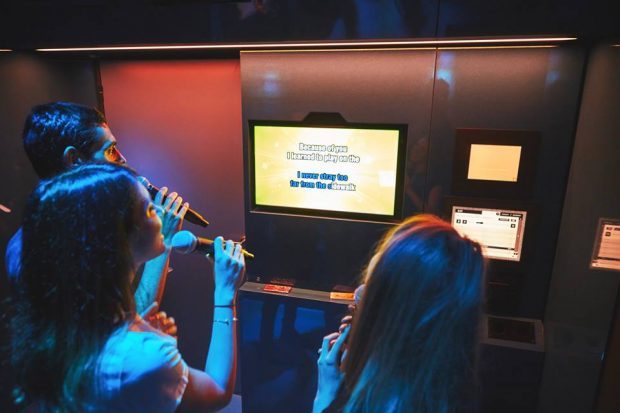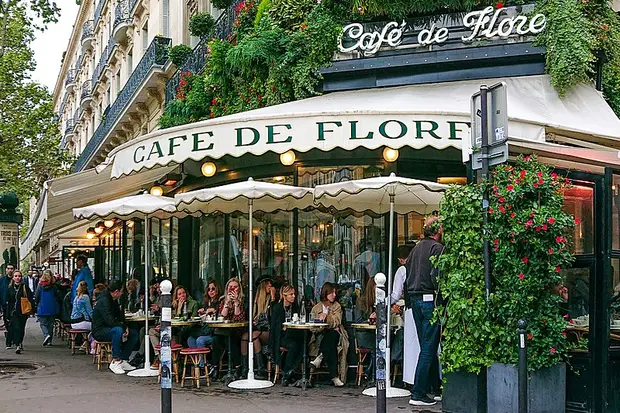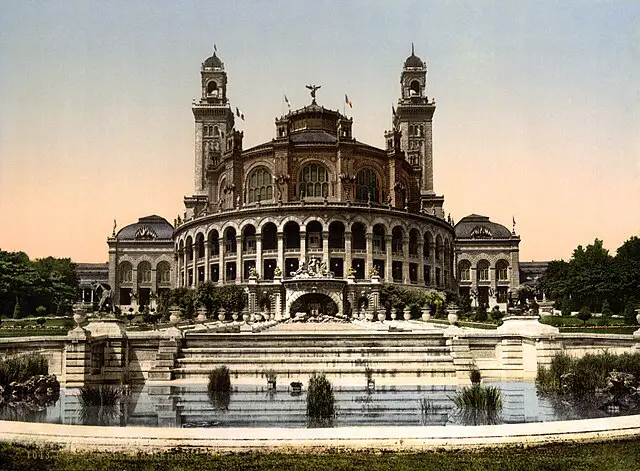
A Striking Photo from 1945 Paris
This photo was taken in Paris shortly after the end of World War II.
It shows a woman walking down a street, holding a giant baguette under one arm and a wooden crate filled with six bottles of wine. She wears a checkered dress with an apron, and her hair is neatly tied back.
The scene might look amusing to people today, but it tells us a lot about what life was like at that time.
The city looks calm, but you can imagine that it’s still recovering from years of war and occupation.
The woman in the photo appears strong and focused. She’s doing something simple—carrying food and drink—but it also shows how people were getting back to daily routines.
This image has become well-known because it mixes something ordinary with something historical.
A baguette and wine are classic symbols of French culture.
Seeing a woman carrying both, in a city that was just freed from occupation, gives the photo meaning.
It’s not just about bread and wine. It’s about resilience and going on with life.
The photo helps us understand how daily life returned slowly to normal.
Even small things like getting bread and wine were signs of recovery. The image doesn’t show soldiers or flags. It shows a regular person doing a regular thing—and that’s what makes it so powerful.
Life Right After the Liberation
In 1945, Paris had just been liberated from German occupation.
The city had been under Nazi control for four years, from 1940 to 1944.
When the German army left and the Allies arrived, people in Paris were happy and relieved.
But that didn’t mean everything went back to normal right away.
Right after the liberation, the city faced many problems.
Food was still hard to find. There were shortages of butter, meat, sugar, and other basic items.
People had to use food ration cards.
Heating fuel and clothing were also limited.
The winter of 1944–1945 was especially cold, and many homes didn’t have proper heat.
Even with all these problems, Parisians tried to bring back their usual routines.
Bakeries reopened, markets returned, and cafés started serving again.
Bread, especially baguettes, was one of the most important foods. It was cheap, filled you up, and was part of nearly every meal.
Wine was also considered part of daily life, not just for special occasions.
The photo of the woman carrying a baguette and six bottles of wine shows how people were reconnecting with everyday life.
The amount of wine might look strange today, but back then, it wasn’t unusual. Families often bought food and drink in bulk, especially when it was available.
There was also a strong feeling of rebuilding and moving forward. Paris had suffered, but it had survived.
Streets were being cleaned, businesses were reopening, and children went back to school.
People were tired but hopeful.
This period was full of change, both difficult and hopeful.
The photo is like a small window into that time, showing one person’s moment in a city that was healing after a long and painful war.
Who Took the Photo?
The photo was taken by Ralph Morse, an American photojournalist who worked for LIFE magazine.
He was born in 1917 and became known for covering major historical events.
During World War II, Morse was sent by LIFE to Europe to document the war and its aftermath.
He was only in his twenties at the time, but he was already considered one of the best photographers of the time.
Morse didn’t just take pictures of battles or soldiers. He also focused on how regular people were living through the war.
He had a special ability to capture everyday scenes that told a bigger story.
That’s exactly what he did with the photo of the woman in Paris carrying a baguette and bottles of wine.
This photo became famous after it was published in LIFE magazine.
It stood out because it wasn’t dramatic or violent.
Instead, it showed something peaceful, normal, and a bit humorous—but also meaningful.
Morse didn’t ask the woman to pose. He saw the moment and snapped the picture quickly.
That’s part of what makes the image so special—it feels real and honest.
Ralph Morse continued working as a photographer for many years and left behind a large collection of powerful images, but this one remains one of his most famous.
I aim to share my tips and recommendations for the beautiful country of France. My goal is to help you plan your next adventure, whether it’s a weekend getaway or a once-in-a-lifetime trip. From finding the best hotels and restaurants, to discovering unique activities and sights, I’ve got you covered!




